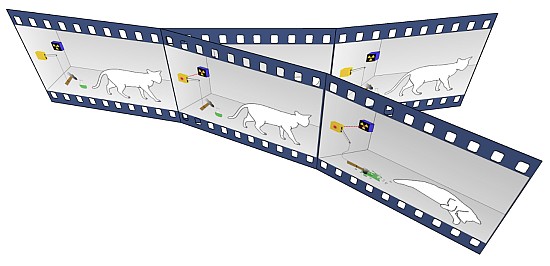A new theoretical paper has tackled the phenomenon of quantum decoherence, the process by which objects slip out of the quantum world and start behaving classically. The paper approaches this in a new way by applying an effect of general relativity to decoherence. The paper claims that gravity is the key to the disparity between the weird quantum world and the everyday, familiar world of human-sized objects in which we live.
Decoherence is a concept central to quantum mechanics. Essentially, a quantum particle, unlike a macroscopic object, can exist in a superposition of different states. This means that in a real, physical way, it exists in all those different states at the same time (with varying probabilities; the stronger the probability of a state, the more strongly the particle inhabits that state).
These quantum states include things like the particle’s spin, charge, energy, and location. So in effect, when a particle is in a super-position, it can be in multiple places at once—like when photons or particles interfere with themselves. This marks the obvious difference with our macroscopic world, where we can never see an object inhabiting two places at the same time. (Or spinning in two directions at the same time for that matter and so on.)
Big vs. small
But coherence is fragile. Any interactions with the particle’s environment can make the particle decohere. When it does, all those simultaneous states collapse to a single state, and things start behaving in a more intuitive, classical manner. The more a particle interacts with its environment, the further it decoheres and the fewer states it occupies.
That may be why we observe larger objects acting like they have just one location. Large objects are more complex and interact with their environments in a myriad of ways, so they're always acting classically. The larger the system, in other words, the less likely it is that it would ever occupy a superposition of states. But it’s not clear exactly where the cutoff line is. Researchers have been able to observe larger and larger objects (including microscopic ones) exhibiting quantum behavior, but they’ve no hope of ever observing this in large objects like soccer balls, much less in humans. So what’s the biggest thing that can be observed to exist in a superposition? And why?


 Loading comments...
Loading comments...
